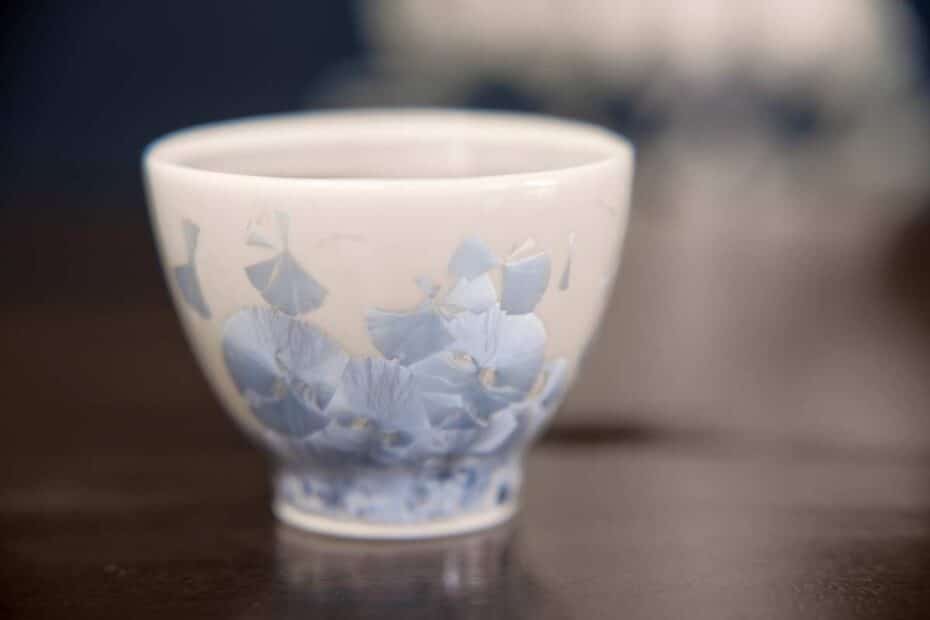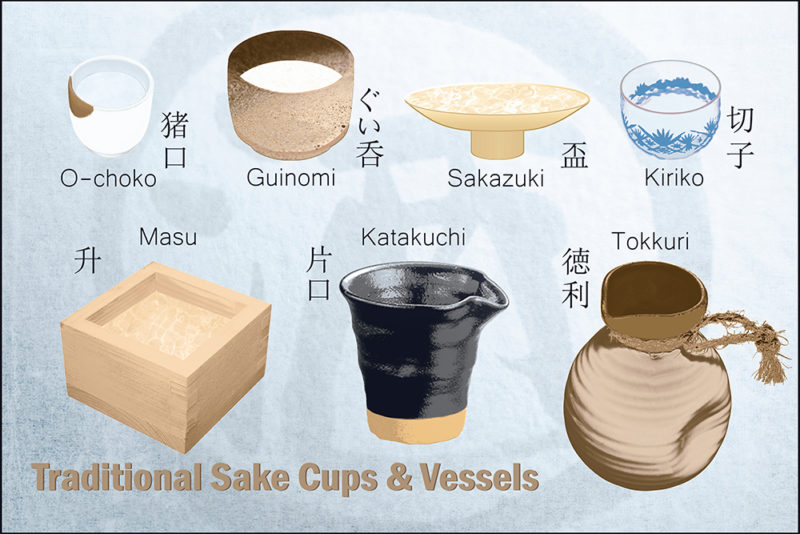If you’ve ever tried sake, there’s a good chance you tasted it from a choko. This smaller sake cup is the most popular type but comes in many shapes, colors, and sizes.
After reading this post, you’ll be an expert on making the most of these cups and selecting your own. Use the links below to jump to the section you’re interested in.
This article contains affiliate advertising links to recommended choko sake cups. I may earn a commission on purchases made through these links.
What is a Choko?
A choko (aka: o-choko, ochoko) is a small, cylindrical sake cup. It’s the most common type and often comes in a set with a tokkuri (carafe). There is no set rule on size, but a choko is smaller than the otherwise similar guinomi.
For centuries, this cup was used for holding sauces. But around the mid-Edo period (late 16th-early 17th century), choko became a popular sake vessel.
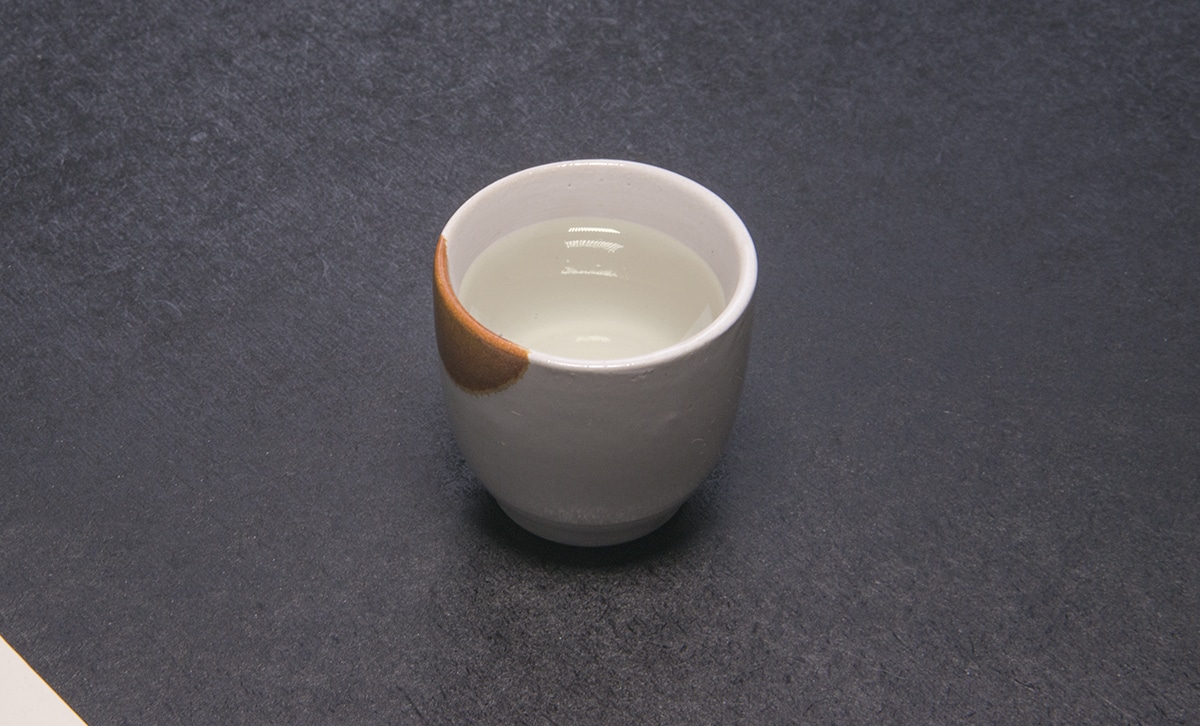
Choko Cup Size and Shape
A choko is small, but there is no universal volume. Most range from half an ounce to two ounces (15-60ml). Cups larger than two ounces are pushing into guinomi territory. But again, there is no standard size.
Most choko are round with roughly the same height and width. But some examples are narrow and tall, while others are squat. Unusual shapes like squares, hexagons, and octagons also exist.
Choko Materials and Styles
Choko materials are diverse, but ceramics are the most common. Most Japanese restaurants use porcelain choko. And this material is great because it’s durable and usually affordable.
Stone and earthenware are also used to make choko. Some say they make sake taste a little softer. These materials do tend to feel good in the hand and look great.
Glass, wood, and tin are also fairly common.
Glass is a modern material for sake cups. Kiriko, which is cut glass, is an exquisite choko material. But it’s only suited for chilled sake. Tempered glass cups are more robust.
Tin is awesome for enjoying warm sake. Just don’t microwave it!
Traditional Japanese Ceramic Choko
There are numerous pottery kilns in Japan making high quality ceramics. Kilns often specialize in a specific material and general aesthetic.
Below are just a few prestigious kilns. But I must warn you: it’s easy to go down the rabbit hole of collecting hand-crafted Japanese sake cups.
Mino ware choko is the easiest to find, but is also of very high quality. It comes in a variety of styles and colors. And best of all, Mino ware is often a great value.
Arita ware (aka Hizen ware) is made from porcelain and has a variety of styles. It’s most commonly associated with blue and white designs.
Kutani ware has deep colors and includes traditional and modern designs.
And Bizen ware from Okayama is revered for its earthy, reddish-orange appearance. However, Bizen choko is less common than larger guinomi.
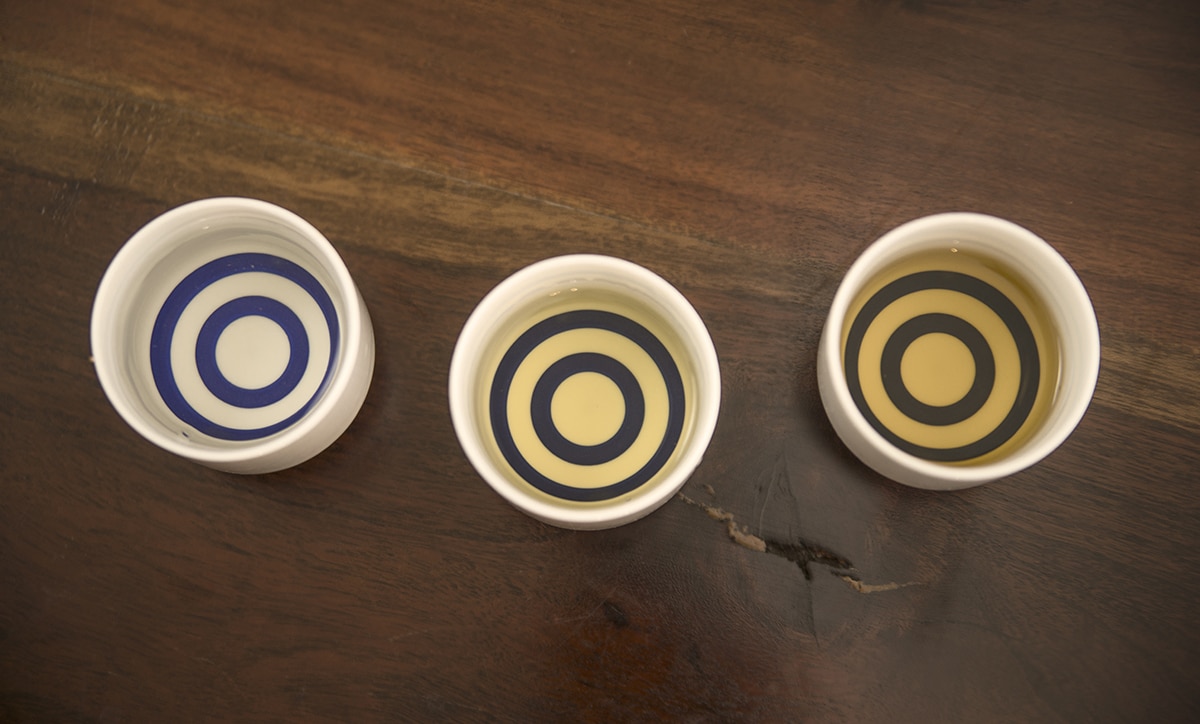
Kikichoko Sake Cups
Kikichoko (aka: janome) are professional sake-tasting cups. They’re white porcelain with blue rings inside at the bottom. This helps identify the color and clarity of the sake being tasted.
Kikichoko come in a variety of sizes from tiny choko to large guinomi that can hold six ounces.
Brewers use big kikichoko to taste freshly pressed sake. And kikichoko are also sometimes used by professional tasters in competitions.
Temperature and Your Sake Cup
The choko is a workhorse cup. It can handle cold or hot sake in most cases. But there are a couple of exceptions when it comes to drinking hot sake (atsu-kan).
Avoid untempered glass like kiriko. And choko with thin lips are also undesirable.
If you’re drinking sake ranging from cold to slightly warm, any choko will work.
How Much do Ochoko Cost?
Choko are small and less expensive than the equivalent guinomi. And they’re often sold in pairs or sets, with or without a tokkuri.
There are affordable sake sets with choko on Amazon for around $12 plus shipping. They’re often made in China, however. Stuff from Japan tends to be more expensive. The floor for a Japanese sake set is around $25. This Hinomaru set on Amazon is a popular option in this bracket.
Hand-made Japanese choko can range from $15 to $100 or more. And that might not include the shipping cost. That said, a high-quality Japanese cup is a gift that keeps on giving.
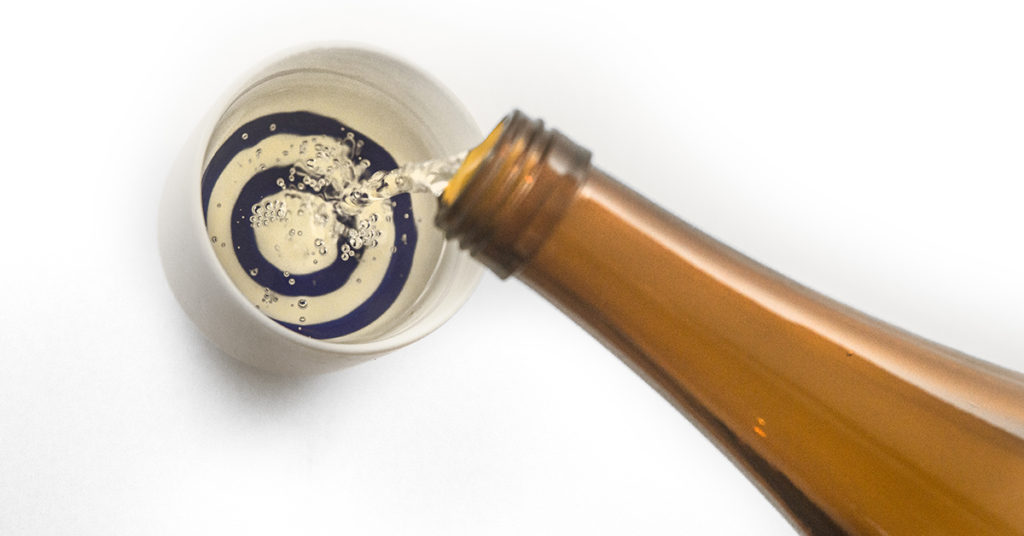
Drinking with Ochoko
Choko can be hard to pour directly into without spilling sake. So a carafe is often used as an intermediary. That’s why choko often come in sets with tokkuri.
You don’t have to worry about any significant service rules. But in general, it’s good to pour sake for others. If you’re sipping solo, there’s nothing wrong with pouring for yourself.
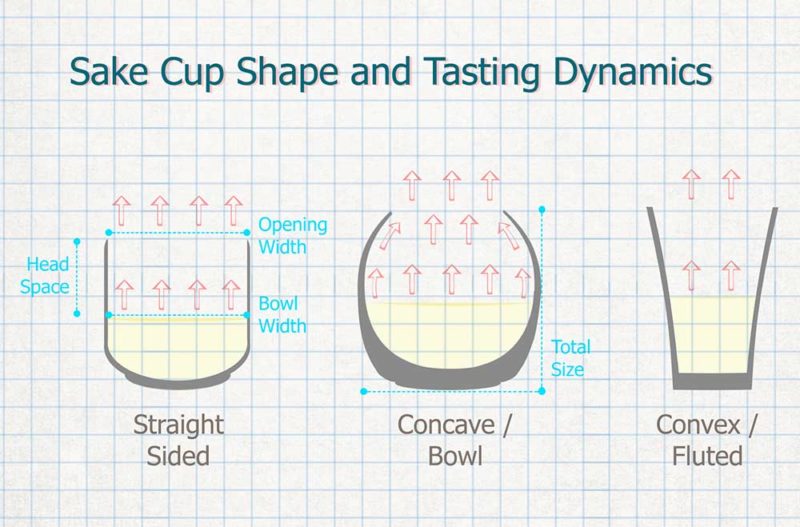
Choko Sake Taste
A choko is a small sake cup with limited capacity, headspace, and liquid surface area. This results in a sake with seemingly less aroma and a lighter flavor.
Sweetness is often embellished too. This is because the sake is concentrated on a small part of the palate. Correspondingly, bitterness and acidity tend to be reduced.
The best sake to drink from choko is earthy, savory, or sharp. Examples include junmai, honjozo, futsu-shu, and some tokubetsu. Another time to reach for a choko is when sake tastes a bit rough.
It’s best to avoid fragrant sake like ginjo and daiginjo. These show much better in larger cups like guinomi or wine glasses.
Not Just Sake
A choko is a suitable cup for shochu served neat, especially from slightly larger cups. Serving Japanese whisky in an o-choko is also acceptable.
The small size of a choko dampens some of the alcohol burn of these spirits. Additionally, the flavor will seem slightly sweeter and lighter.
Other sake cups
It’s worth repeating that the difference between a choko and a guinomi is size. Choko are smaller, whereas guinomi are larger. Both have a similar range of shapes, materials, colors, etc.
The sakazuki is a traditional sake cup with a flat, saucer-like shape. The sake capacity is typically meager. It’s often used for ceremonial purposes. You’re more like to find a choko at your local izakaya.
Learn more about sake cups and glasses here.
